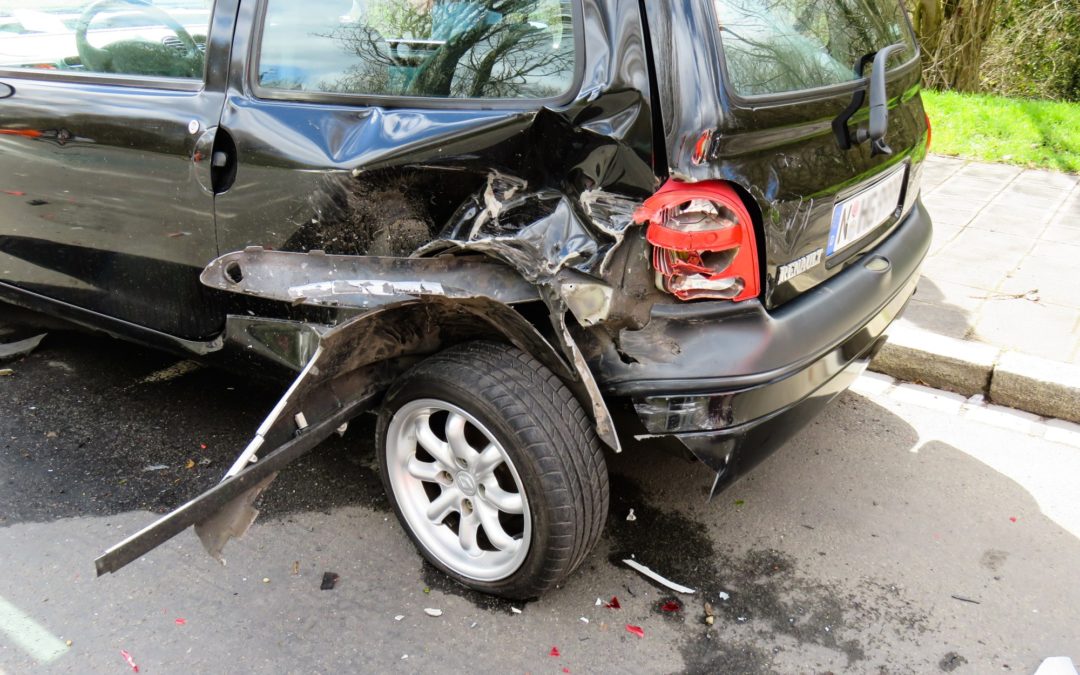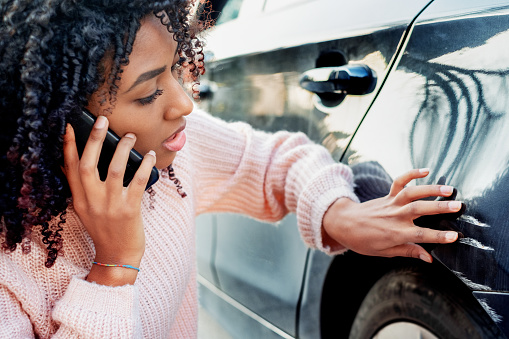
by Charlie Smith | May 1, 2020 | Automobile Accident |
While summer usually means vacations and trips to the beach, it’s also a dangerous time for teenagers to hit the road. The AAA Foundation for Traffic Safety calls these months the 100 Deadliest Days because teens are more likely to be involved in a deadly crash. Learn why these days are so dangerous and what you can do to help you and your teen drivers stay safe. Why Is Summer Driving So Dangerous? We know that a car accident is a common occurrence during the summer months, but why is summer driving more dangerous than winter? There are a few factors that stand out. First, there are typically more drivers on the road. Summer is a favorite vacation time, especially for families, and a lot of people head out on annual summer road trips. Summer also means more teen drivers on the road because they’re not in school over the summer. Additionally, there is more construction on the roads, and obstacles like detours can cause confusion with drivers which may lead to more accidents. According to the AAA Foundation for Traffic Safety, the time between Memorial Day and Labor Day sees the average number of fatal teen driver crashes climb 15 percent when compared to the rest of the year. Teens’ inexperience in dealing with a variety of driving situations, combined with more time spent on the road during the summer, is the main factor behind this increase. Motorcycles are another concern in the summer when riding conditions are best for much of the country. Motorcyclists that don’t have the ability to ride for several months out of the year may have weakened reflexes, especially...

by David Singer | Nov 14, 2019 | Automobile Accident |
A Brief Guide on What to Do After a Car Accident Injury If you’ve ever been in a car accident, even a minor fender bender, you know how it can leave you shaken. That’s why it’s a good idea to read up on what to do after a car accident injury ahead of time. If it ever happens to you, you’ll be prepared! Even if you haven’t sustained an obvious injury, it’s important to take these steps as preventative measures. Some injuries, like whiplash and back injuries, might not be apparent immediately but will cause you untold pain and suffering down the line. 1. Safety First Assess the scene immediately to make sure everyone is safe. Call an ambulance if necessary. Next, turn on your flashers or set up flares surrounding the accident site to prevent additional motorists from getting hurt. 2. Take Notes & Plenty of Pictures of the Crash: Detailed notes and photos of the scene may help the court and insurance agencies decide who is responsible. Now that almost everyone carries a smartphone, it’s easy to document the scene of an accident with photographs or even video. Of course, you will want to take photos of the damage done to both cars. When taking photos of the scene, it’s important to document damage to your vehicle, but the position of vehicles and skid marks can also be crucial to determining exactly what happened in an accident. Pay particular attention to the road and surroundings, as well. If there is the possibility that weather, road conditions, or improperly maintained infrastructure played a part in your accident, you...

by David Singer | Oct 14, 2019 | Automobile Accident |
Over 140 million workers commute to work each day, a number that steadily keeps growing. With more and more cars crowding the roadways, chances are high that you’ll be in a car accident at least once. Crashes aren’t limited to rush hour. People indulge too much at parties or on special holidays and then get behind the wheel, making the roads unsafe. When you’re in a crash, it’s too late to start thinking about what type of car accident insurance is available. Keep reading to learn about your options before you really need it. Liability Insurance Liability coverage is the portion of your policy that pays for other’s injuries in an auto accident that you cause. Liability coverage has several different aspects to it, including property damage you cause to the other party in an at-fault accident. However, the portions relevant to personal injury claims are bodily injury liability limit per person injured, and bodily injury liability limit per accident. Most states won’t let you drive a car without liability insurance, which covers the basics in case you’re at fault in a collision. It’s always a good idea to carry coverage beyond what your state requires, just in case. The more protection you provide for yourself and your assets, the better. Comprehensive Insurance The majority of drivers- around 77% – purchase both liability and comprehensive insurance. Comprehensive is just like the name suggests – it covers a wide range of incidents. Get comprehensive insurance to cover losses due to bad weather, theft, damage from hitting a large animal, and more. Underinsured/Uninsured Motorist Protection Other drivers might not have as much coverage as you do, or any at all. Under-insured or uninsured motorist protection covers damages to...
by Charlie Smith | Sep 18, 2019 | Automobile Accident, Personal Injury Lawyer |
As the children head back to school, adults realize the holiday season is approaching. With the advent of the holiday season, comes a rise in traffic and accidents on the road. Recent studies confirm what travelers have always known – holidays are among the most dangerous times to be on the road. During the holidays, increased traffic, along with travelers driving in unfamiliar areas, and driving while tired or under the influence, means higher accident and fatality rates around holidays. Let’s explore the most dangerous holidays to be on the road, as well as ways to drive safer and smarter should you find yourself traveling during the upcoming holiday seasons. The Most Dangerous Holidays to Drive Studies show that holidays, in general, denote a nearly 35 percent increase in car accidents, with fatalities increased to nearly 40 percent. The two most dangerous travel holidays are Thanksgiving (100 percent increase in accidents) and New Year’s Day (95 percent increase in accidents). On Thanksgiving, most families travel the day before after work. They are typically tired and rushing after work, or on Thursday when they are rushed, distracted, and stressed trying to arrive at their destination on time. New Year’s Day means New Year’s Eve revelers who have been drinking, eating, and celebrating until early morning are on the road, increasing alcohol-related accidents. Independence Day (aka 4th of July) when drinking, driving, and accidents go hand in hand. Majority of accidents happen on Christmas Eve and Christmas Day, particularly when the holiday falls on a weekend. Memorial Day when everyone prepares for the start of summer and the season ahead. Labor...

by Charlie Smith | Jul 26, 2019 | Automobile Accident, Blog |
After being involved in a car accident, dealing with a law suit may be another added stress factor you have to deal with. Depending on the severity of your injuries, damage to your property, or the other party’s insurance provider, trial may be necessary to get the compensation you need to get your life back to normal. If you decide to sue the at-fault driver for compensation, here is a basic guide on what you need to know about going to trial for a car accident injury case. 1. Opening Statement The first thing that’s going to happen is that both your attorney and the defendant’s attorney will state their opening cases to a jury. This introductory monologue is when each attorney outlines the key point in their case. Once opening statements are over your attorney will get the chance to go into further details about your case by presenting your claim. 2. Present Your Claim Presenting your claim means your attorney will need to provide proof that will back up the points they made in their opening statement. This proof could be witnesses that saw the accident happen, police reports, medical experts who treated your injuries after the accident, accident recreation specialist testimony, and any photographs you took. 3. Defendant Presents Their Claim Next is the defendant’s attorney’s turn to make their case. They will provide their proof and give their version on how the accident happened. After both parties have presented, it’s time for closing arguments. 4. Closing Arguments Once both attorneys are satisfied with the information they’ve presented, they will summarize the main points illustrated in their opening statements and in your claim....

by Charlie Smith | Apr 8, 2018 | Automobile Accident, Blog |
Being hit by a bus or injured on one during your daily commute is a terrifying moment. You’ll need to follow a few steps immediately to make sure you’re safe and you receive treatment for any injuries. But you also need to follow a few best practices to protect your rights and hold the responsible party accountable for the accident. If you’re injured on a bus or hit by a bus, follow the steps below. Contact Emergency Services Your safety and other passengers’ safety are the immediate priorities following a bus accident. The driver should contact emergency services immediately, but if the driver doesn’t or can’t, call 911. Since buses are larger than many vehicles on the road and carry several passengers who are either standing during a collision or sitting without seat belts, a high likelihood of injuries can occur with these events. Document the Accident If you can, take notes about the events leading up to the accident. You should also take photos if safe to do so and collect the contact information of any witnesses. An attorney can help you gather other evidence, such as the police report, to help document the accident. Get Medical Attention Regardless of how you feel after a bus accident, seek medical attention. Even if you don’t feel hurt, you may have been injured, and the symptoms may not have presented themselves yet. When you visit a doctor, you’ll also get an official medical report. Documenting the extent of your injuries and demonstrating that you did seek medical attention are vital to securing compensation for injuries you experienced following a bus...







